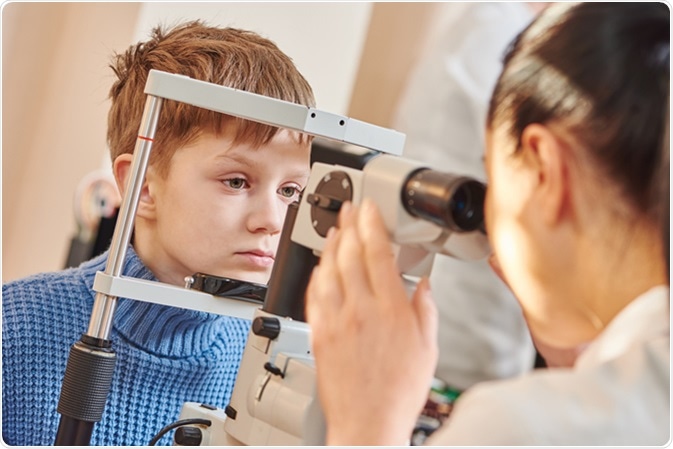Leading Cardiologist in Andalusia: Discover Specialist Clinics Near You
Leading Cardiologist in Andalusia: Discover Specialist Clinics Near You
Blog Article
The Pros and Disadvantages of Various Refractive Surgical Treatments for Improved Eyecare

LASIK Surgical Treatment
LASIK surgical treatment is a generally executed refractive procedure that intends to deal with vision problems such as farsightedness, nearsightedness, and astigmatism. Throughout the treatment, a slim flap is produced on the cornea, and a laser is used to reshape the underlying cells, fixing the refractive mistake.
One of the primary benefits of LASIK surgical procedure is the fast enhancement in vision experienced by lots of patients. It is essential for people considering LASIK surgical treatment to undergo a comprehensive examination by an eye care specialist to establish if they are ideal prospects for the treatment.
PRK Treatment
The PRK procedure, likewise known as Photorefractive Keratectomy, is a kind of refractive surgical treatment that aims to remedy vision issues similar to LASIK surgery. Unlike LASIK, which entails creating a flap in the cornea, PRK works on the surface area layer of the cornea.
One of the benefits of PRK over LASIK is that it gets rid of the threat of flap-related complications given that no flap is produced throughout the surgery. Despite the longer recovery period, PRK can be an ideal alternative for individuals seeking vision modification surgical procedure.
SMILE Surgical Procedure
A cutting-edge refractive surgical treatment method gaining appeal in the field of ophthalmology is SMILE Surgery. Small Incision Lenticule Removal (SMILE) is a minimally intrusive procedure that remedies vision by reshaping the cornea using a femtosecond laser. Unlike typical LASIK surgical treatment, SMILE Surgery involves creating a small cut in the cornea to draw out a lenticule, which leads to less interruption to the corneal framework and potentially faster healing times.
One of the key advantages of SMILE Surgical procedure is its ability to deal with myopia (nearsightedness) and astigmatism with high accuracy, resulting in outstanding visual outcomes for clients. The minimally intrusive nature of the treatment also decreases the threat of difficulties such as dry eye disorder, making it a favorable option for individuals looking for refractive surgical treatment.

LASEK Method
Having explored the benefits and factors to consider of SMILE Surgical treatment, an additional noteworthy refractive surgical treatment method worth checking out is the LASEK Method. LASEK, which represents Laser-Assisted Subepithelial Keratectomy, is a kind of laser eye surgical treatment that aims to remedy refractive mistakes such as nearsightedness (nearsightedness), hyperopia (farsightedness), and astigmatism.
Unlike LASIK, LASEK does not include creating a corneal flap. Rather, during a LASEK treatment, the specialist makes use of a diluted alcohol solution to loosen up the slim external layer of the cornea, called the epithelium. This layer is after that carefully moved apart to allow the laser to improve the underlying corneal cells. When the cornea has been improved to the desired degree, the epithelial layer is repositioned.
One of the primary advantages of LASEK is that it can be suitable for people with thin corneas that may not be good prospects for LASIK. In addition, LASEK usually causes minimal post-operative pain and a quicker healing time contrasted to PRK. The aesthetic recuperation procedure with LASEK may be slightly longer than with LASIK.
Implantable Get In Touch With Lenses
Implantable Call Lenses supply a long-lasting vision correction solution for people looking for a choice to standard contact lenses or glasses. These lenses, additionally called phakic intraocular lenses, are surgically inserted right into the eye to remedy refractive mistakes such as nearsightedness (nearsightedness), hyperopia (farsightedness), and astigmatism. cardiologist andalusia. Unlike traditional call lenses that rest on the surface of the eye, implantable contact lenses work within the eye itself, giving clear vision without the demand for day-to-day upkeep or elimination
One of the vital benefits of implantable call lenses is their durability. Once placed, they can stay in the eye indefinitely, offering stable and consistent vision correction. In addition, these lenses can be an exceptional option read here for individuals that are bad candidates for laser eye surgical procedure or that prefer a relatively easy to fix vision correction procedure.
Nevertheless, implantable contact lenses do carry some dangers, including the capacity for cataracts or raised eye stress. It is critical for individuals considering this alternative to seek advice from with an eye treatment specialist to identify if implantable contact lenses are the best option for their specific requirements and eye wellness.
Conclusion
To conclude, each sort of refractive surgical procedure has its very own advantages and drawbacks. LASIK surgical treatment is popular for its quick recuperation time, while PRK procedure may be suitable for clients with slim corneas. SMILE surgical treatment offers marginal pain throughout the treatment, however LASEK technique might have a longer recovery process. Implantable get in touch with lenses offer a choice for those who are not ideal candidates for conventional surgeries. Individuals must seek advice from their eye treatment provider to identify the very best choice for their specific needs.

On The Whole, SMILE Surgical procedure provides an appealing alternative for people looking to enhance their see this here vision through refractive surgical treatment.
Report this page